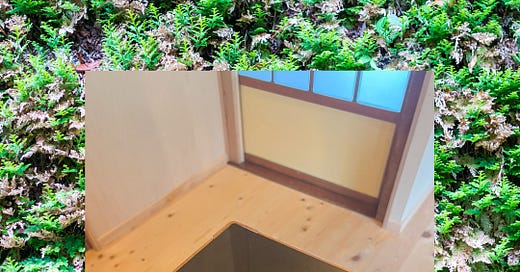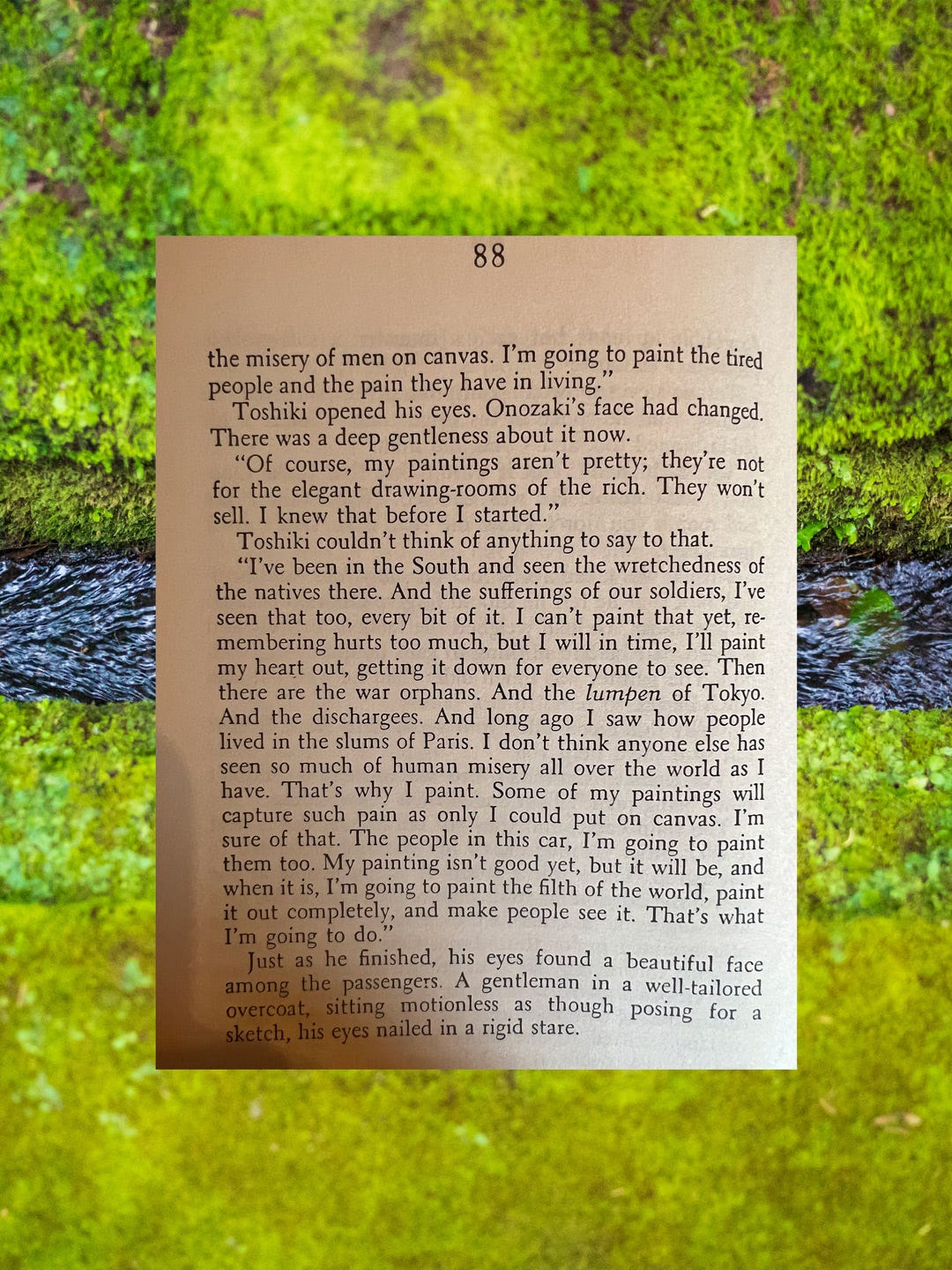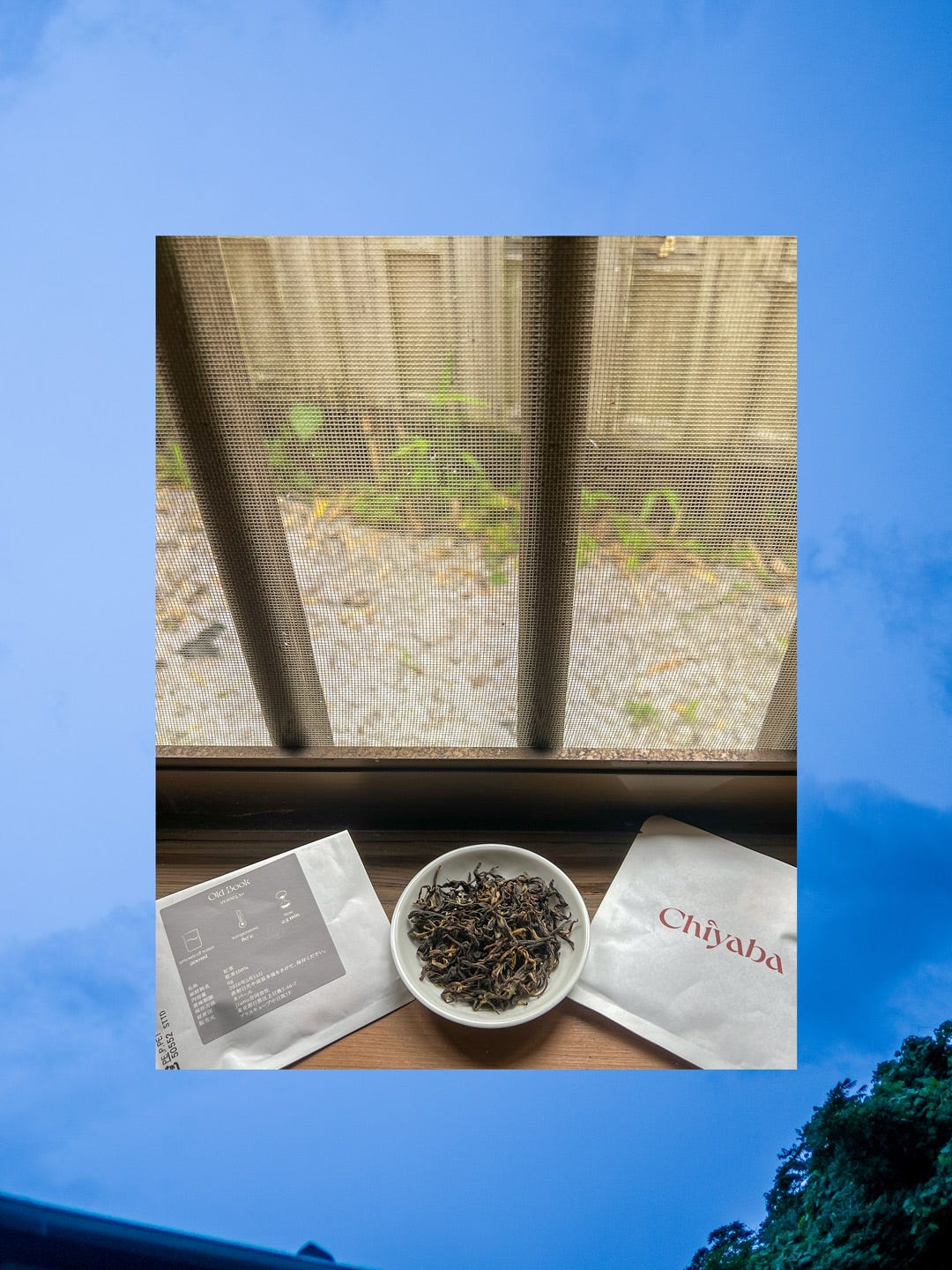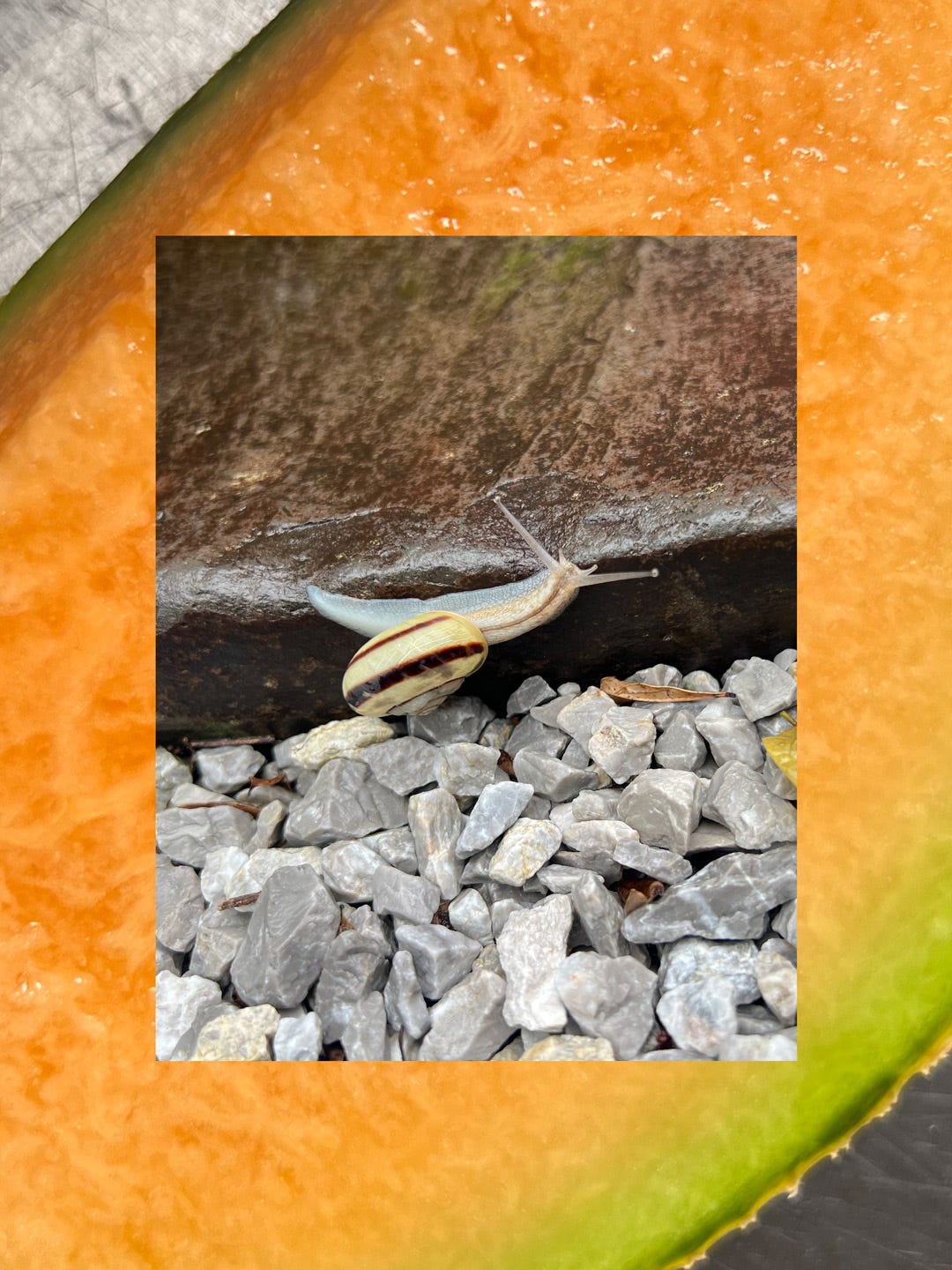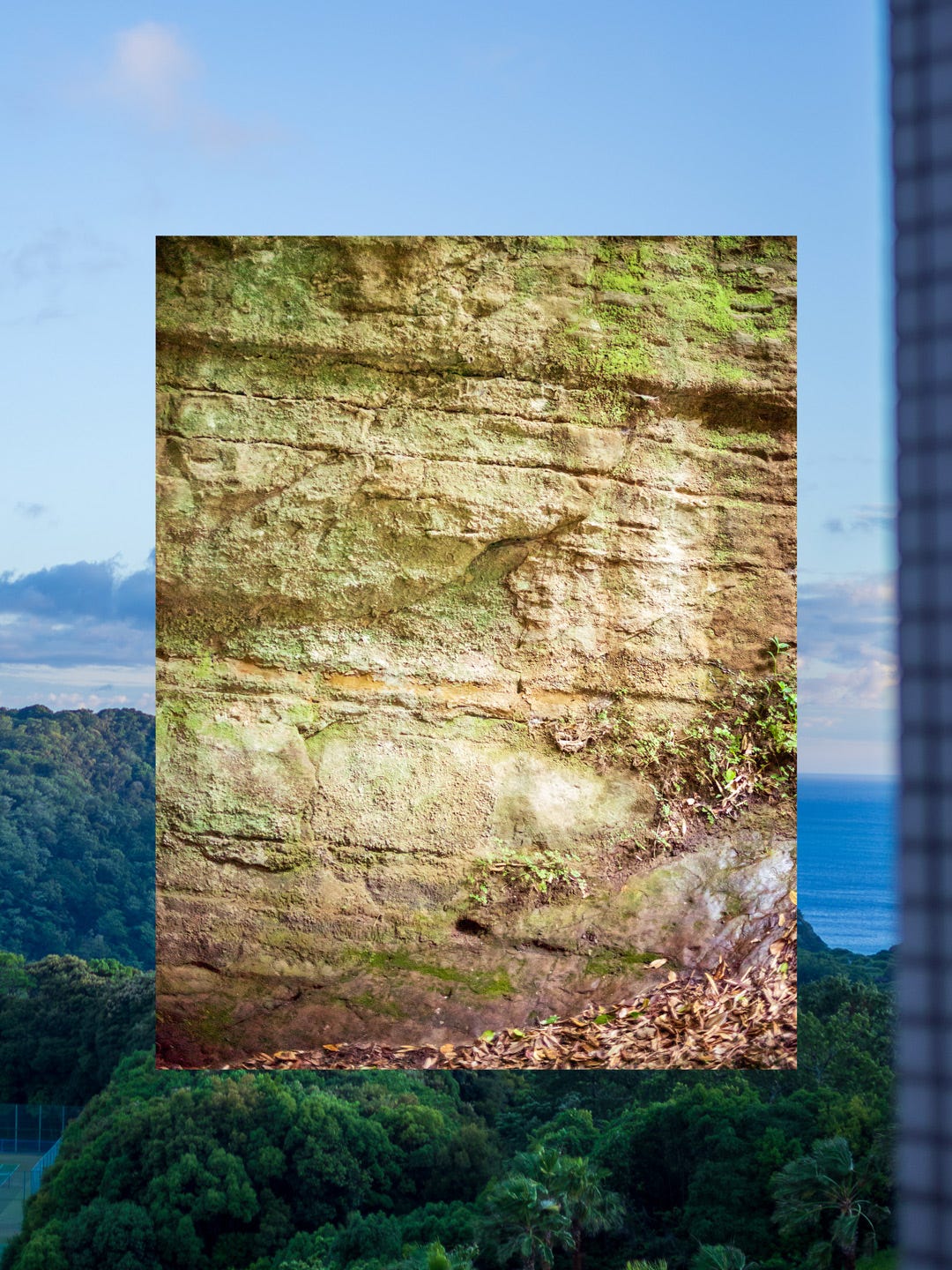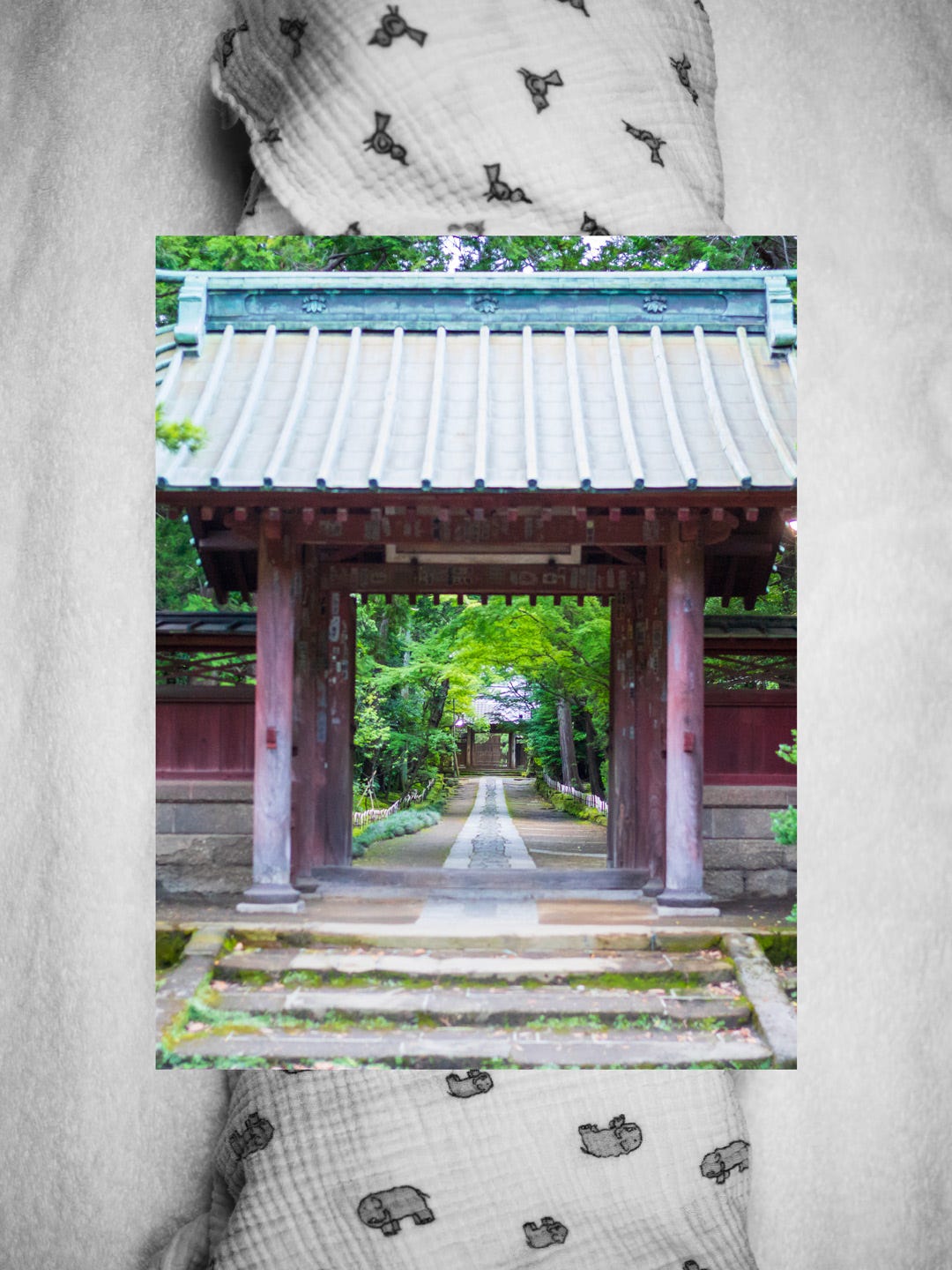Old Book, New Tea: A Shincha 2024 Retrospective (Off The Books #21)
In which I attend a first flush fiesta & spill about how I blew the shincha bag more wildly this year.
Imagine. The first Japanese novel translated into English after the war. Kamakura’s very own Jiro Osaragi—his pen name itself is an alt-reading on the kanji for my adopted town’s main tourist attraction, the objectively stunning Daibutsu Big Buddha in Hase—wrote Homecoming right here. And I’m reading it, right now. One eye on his words, one eye on mine. It is an old book. It is a good book.
See what I mean? With what, might one, pair such paintery lines nestled in an old book? How about, I don’t know, Old Book?
Imagine. A first flush Himalayan black tea that dances like a beet and punches like a radish. Warm and wet and heavy as a rainy season wind. A crave quenching ride down the mountain in the back of a flatbed pickup truck after a hard day’s labor. A thumb print of a tea. A big toe squeeze of a tea. A thick boot tea, a thick book tea. And, yet, also a tea with soothing spunk below those yellowed pages. A blooming hydrangea reflecting off a still lake—or an electric summer green mountain side. It is, at once, a tea that can be old and new at the same time. A first flush tour de phosphorescent force.
And of course, Asumi and Kanchan of Chiyaba fame have the gall to go out and actually name it Old Book. And of course, it comes into the tea tunnel of my mouth just as the aforementioned Homecoming arrives like a pile of pillow-soft parchment on my doorstep. Ah, tea imitating life. Life imitating tea. Where the fiction starts and the non-fiction ends is no longer any of my concern.
Imagine. A guy like me gets an invitation to a private first flush tasting party at my aforementioned home-away-from-home, Chiyaba in Nakameguro. That’s right. A tea release party. A party for the very things I’ve been partying about all on my own. It’s serendipitously guzen times likes these that make me break out in song—usually the 2022 Albiceleste version of Muchachos as I gaze into the asteroid blue eyeballs of the double dragons and all wails turn into willingnesses to be all sorts of swept away. I tap into what they are tapped into and off we go, smile plastered, tingle toed, blasted open by the extraordinary of all that I believed to be ordinary.
(Not an unimportant aside, this is now the first song they’ve ever heard and I sign it to them every day, it’s just what came to me, and I make no apologies since it never fails to console them and I can see trophies in their eyes already).
In short, what a party it was. A celebration that the suns and rains and mountains give us more tea, even as reports of the earth’s demise increase. A big-ups to the farmers upon whose backs and brows so much sweet nectar depends. A reminder that one papa’s trash is another’s mystery. Yes. Indeed. As I tell the twins every day: I am honored to collect their waste.
And so, after a couple years of shincha seasons in Japan—first as a visitor in 2022, where I visited tea growing regions Ureshino, Sonogi, and Yame for the first time whilst acquiring a fully psychotic 2 kilos of tea, then as a resident last year, where I chopped it down to around 1.5 kilos in a rabid effort to try everything I could on visits to farms in Kyushu and Shizuoka—I am finally getting it under control. Once again, I’m just kidding. I acquired yet, again, a full kilo of spring 2024 harvest teas grown here in Japan.
I also sourced shincha for my fellow-sencha guzzling Mama Chan as well as respected reader and fellow substacker comrade Nick Herman, of Kaleidoscopic Mind fame (a publication very much worth reading if you, like me, enjoy long travel/hiking dispatches as well as in-depth interviews with translators of Chinese poetry).
The strategy this go around was to try new farms and new regions (even though I still bought from a couple farmers I’ve loved for years—Tea Factory Gen in Hiroshima—and a couple regions without which spring just wouldn’t tase the same (Shizuoka and Yame). I focused on farms that focus a bit more on the natural/wild side of tea after a few years familiarizing myself with those on the cutting-edge side (hoshinoseichaen, for example). I drew inspiration from tea’s I’ve had at places like A.Drop and Ten as well as from what Noma served at its Spring 2023 Kyoto popup and the producers written about by Tyas Sosen. I am also starting to meet and connect with more younger farmers who are out trying things on old or abandoned farms to see what the ocha new wavers are surfing on.
Even though the arrival of the double dragons made a spring sourcing trip to farms/gardens difficult this spring, that didn’t stop me from sourcing some of the best Japanese teas I’ve had in my life. I look forward to continue to sip throughout the summer and learning more, forever a beginner state of mind and a belover of shincha season. I’m sure I’ll write more about some of them later.
For now, in addition to checking out Chiyaba’s first flush gems from Nepal, here’s a quick overview of some (but not all) of my 2024 Japanese Shincha sourcings for your perusal—and a poem at the very bottom — bless be an old book and a new tea near you:
Hiroshima Prefecture
I stumbled across Gen San’s first Onomichi outpost in 2021, tried his teas, and have been a huge support of his entire approach ever since. His Zirai shincha is unreal and I love that he sells in small batches (100g is standard tea size in Japan but it’s a real commitment if you’re trying a tea for a first time).
Fukuoka Prefecture (Yame)
八女鰐八 / Yame Wanibachi
Farmer: Takaki Ryo
I learned about Takaki San through Betana San (of A.Drop) and have anticipated trying his teas this year, a part of the new wave of younger tea farmers in Japan and in a region I’m very familiar with in Kyushu, where umami reigns supreme.
Farmer: Masashi Harashima
Reported to have the oldest Yabukita tea bushes in all of Japan, this is a Yame farm that’s higher up in elevation and emphasizes natural/organic teas—the black teas have been in the news lately (shoutout to the combo of Eighty Degrees writer and editor Cat Kerr and Kyoto kindred tea brother George Guttridge-Smith for this story in the Japan Times last month) but the greens are themselves magnificent and I got a hold of the 88 night teas from them this year. I don’t remember how I found them, but I think through Tyas Sosen’s book The Story of Japanese Tea for the first time.
More: https://yunomi.life/collections/chiyonoen-tea-garden
Nara Prefecture
月ヶ瀬健康茶園/ Tsukigase Kenkō Chaen Tea-Farm
Farmers: Fumiaki Iwata & Doumen
I rocked several shinchas and nonshinchas from them this year, and can say they are committed to freshness in a way I’ve not seen from many producers—I have not the energy to write at length about their shincha reservation system but it was something to behold.
Noma Picks: Hojicha & Handoicked Benifuki wakocha
More: https://www.the-tea-crane.com/manufacturers/fumiaki-iwata/
Kagoshima Prefecture
This was one of the earliest shinchas I tried this year (and one of the earliest harvest as Kagoshima is typically the earliest to harvest of the major regions) and it has a mellow drinkability without overpowering with umami. A family favorite so far.
Farmers: Nuruki sisters
Noma pick: Organic Fukamushi Sencha
Shizuoka Prefecture
Single origin/single cultivar handpicked favorite, carried in USA by places like Kettl, located in Shizuoka where tea and tea culture reigns supreme. I didn’t get a chance to visit his operation in person last year as planned, but it will happen soon. His teas are among the most expensive in Japan but they are worth it.
Kanagawa Prefecture
いしい茶園/Tsunaemon by Ishii Chaen
My new favorite local garden, run by a fellow Kamakura International FC homie. I have had teas from Hadano here in Kanagawa before but this was my first from this approximate area. Can’t wait to visit in person and sip on the terrace.
Shiga Prefecture
Some of the oldest living tea bushes in Japan, wild-style to the fullest, introduced to me by Betana San of A.Drop fame and also written about by Tyas Sosen in his book. These are ‘slow’ shinchas and only arrived online (and to my house) last week. The last cop of the shincha season—just in time to be sent off to Nick in Canada.
Old Book
Off the sauce On the rocks Back flipping Slackwards Through life This cycle Cannonball falls Face first forward Clustertrucked Traffic jammed Grinning my glory Like an antenna Ornament Captivated Worn ink Warmed only Just so Candle flip These pages May burn But will Never bury

